STAFFORDSHIRE'S PEAK DISTRICT - PART 4

Ilam to Manifold Way
ILAM (between the A515 Ashbourne to Buxton Road and A52 Ashbourne to Stoke-on-Trent road – SK134508)
Alpine-style cottages, a Tudor Gothic Hall, an eccentric river and a wonderful background of soft green hills make Ilam popular with visitors. It is situated in one of the most spectacular locations in the Peak District, with magnificent views towards Thorpe Cloud and the entrance to Dovedale. Only a short walk away to the east are the Dovedale Stepping Stones.
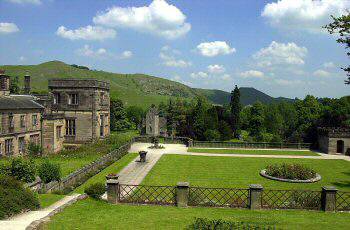
Ilam Park is free for all to walk around. The aptly named Paradise Walk, by the River Manifold, fringed with woodland and planted as a pleasure ground for the hall, is a favourite with most people. The river disappears for most of its journey from Wetton Mill, flowing underground before emerging at the boil holes, in the grounds of Ilam Hall. Only in the rainy season does it behave like an ordinary river and flow above ground.
ILAM – ILAM HALL
All that remains of the old hall are the entrance hall, armoury and servants’ quarters, which have been converted into a Youth Hostel. The Italian Gardens, although much changed from the days when the Watts-Russell family lived at the hall, provide excellent views and the chance to relax Tucked away in the gardens is a grotto where William Congreve wrote his first play while recuperating from illness. Samuel Johnson also visited Ilam and it is said that Happy Valley, in his book ‘Rasselas’ was based on Paradise Walk. There are National Trust tea rooms, a shop and information facilities to enjoy. A National Trust car park is available.

ILAM – HOLY CROSS CHURCH
In the church of the Holy Cross, the chapel of St Bertram contains a shrine that became a place of pilgrimage in the Middle Ages and the scene of many miraculous cures. Bertram, who had connections with the Royal family of Mercia, was returning from Ireland with his wife and newborn child. He left them briefly to look for food, only to find when returning that wolves had savaged them both. At once he denounced his heritage and spent the rest of his life as a hermit preaching the gospel. The Chantry Chapel holds a finely carved memorial to David Pike Watts, a former owner of Ilam Hall.
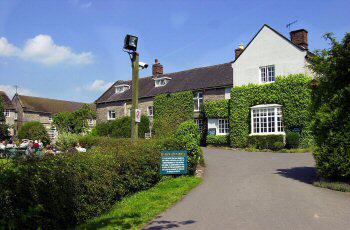
ILAM – IZAAK WALTON HOTEL
The Izaak Walton Hotel reminds us of the famous angler of the same name, who together with Charles Cotton wrote the bestselling book ‘The Compleat Angler.’ The lovely views from the hotel and its manicured lawns are once again available to the public following a period of closure. Some of the bedrooms were named after members of the Royal family who stayed at the hotel at the time of a televised event in which they took part.
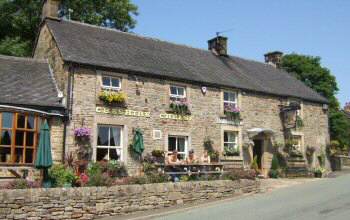
LONGNOR (on the B5053, off the A515 Buxton to Ashbourne road – SK090650)
Set in lonely moorland countryside, six miles southeast of Buxton and close to the Derbyshire border is the ancient village of Longnor. It sits astride a narrow ridge of gritstone where the River Dove flows to the north and the River Manifold to the south. It attracts large numbers of visitors who come to explore the upper reaches of these two famous river valleys and the rugged scenery that surrounds them.
Little was heard of Longnor, in what was a wild and rugged area at the northernmost boundary of Staffordshire, before the first written reference to the founding of St Bartholomew’s Church in 1223. Agriculture was the main preoccupation of the few people who lived here, but by the mid-1600s, there were four annual fairs and two weekly markets. The trading opportunities attracted more and more people to Longnor and its importance rapidly increased. New trades sprang up and local farms provided food for consumption. On market days, the streets were thronging with people buying and selling goods.
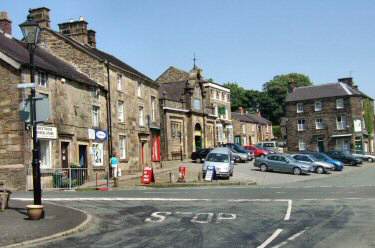
At the upper end of the steeply cobbled marketplace, the market hall dates to 1873. At that time, it was rebuilt at the direction of the Harpur-Crewe family. Longnor at that time was a prosperous market town and on the board outside the market hall, the scale of charges is listed. An important cottage industry for many years was oatcake making for which North Staffordshire is renowned. Longnor held its position as a small market town until the disappearance of the coaching age. When gradually easier access to other towns and cities improved, businesses moved away to Buxton and Leek.
There are many quaint epitaphs in the churchyard, which closed for burials in 1888, and a new cemetery opened. The one most quoted is that for William Billinge, born in a cornfield in 1679, he died 106 years later only a stone’s throw away. He lived through seven reigns and fought in countless battles and was still soldiering at the ripe old age of 66.
Longnor’s Annual Races are a very colourful affair, said to have resulted from a meeting of local farmers. Who decided to put up a wager to decide the winner by racing their mounts around the village streets. This popular event is continued to this day but in a somewhat different format with cross-country racing, horse racing, trotting, motorbike and sidecar racing and a gymkhana. Longnor Races take place on the Thursday after the first Sunday in September.
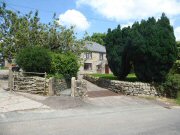
LOWER ELKSTONE (1.5 miles west of Warslow – SK062583)
Lower Elkstone is a slightly smaller version of its neighbour Upper Elkstone where there are a handful of cottages and a few hill farms. Warslow Brook flows south of the village with the moorland ridge of Morridge, much loved by walkers close by. Mains electricity was supplied to Warslow by 1940, but Upper and Lower Elkstone had to wait until 1962.

LUD’S CHURCH (located in a wood known as Back Forest about 2.5 miles west of the A53 between Leek and Buxton – SK988656)
Lud’s Church is over 50 feet deep and over 100 yards long. In places, it is only a few feet wide. It is thought the deep chasm has been caused by a landslide when a section of rock splits. In the past, it was used by religious dissidents for worship and is said to be named after their leader. The Lollards, who were followers of John Wycliffe, an early church reformer, are said to have used the deep chasm as a secret place of worship during the early 15th century when they were being persecuted for their religious beliefs. It may have been named after Walter de Ludank or Walter de Lud-Auk who was captured here at one of the Lollards meetings. Today, it is regarded as one of the Peak District’s most impressive landmarks.
MANIFOLD WAY (runs from Hulme End to Waterhouses on the A53 Leek to Ashbourne Road)
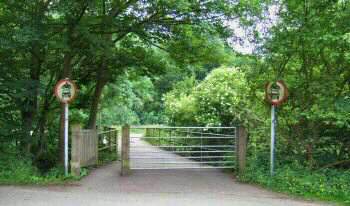
Leek and Manifold Light Railway used to run through the Manifold Valley, from 1904 to 1934. It was a narrow-gauge railway that ran from Hulme End in the north to Waterhouses in the south and was operated by the North Staffordshire Railway Company. It was opened largely to provide faster service for milk and dairy products from farms around the valley and linked up with a daily milk train that ran from Waterhouses to London. It also provided easier transport for the copper mined at Ecton. Later it was used for tourist rides.
Lack of sufficient business forced the closure of the line and it has subsequently been turned into a trail for walkers and cyclists, only two miles of which is not car-free. There are several caves close to the Manifold Track, the most impressive of which is Thor’s Cave a former home to both Stone Age dwellers and wild animals.
Wetton Mill was established in the valley by William Cavendish, second son of Bess of Hardwick. It was finally abandoned in 1857; one of the buildings has been converted into a popular tea room. Several walks lead off the track, up through woods to the hills that tower above the gorges. There is parking and cycle hire at both ends of the trail. Also, there is a car park near Weags Bridge on the Grindon to Wetton Road.
PART 5 TBA
